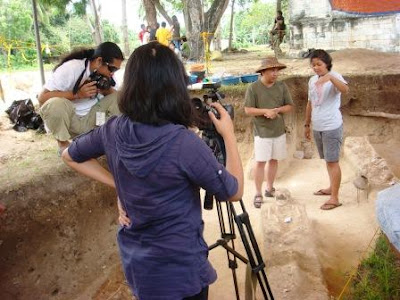 |
| One of the small earthenware pots recovered during the second round of excavations at the San Remigio Parish Church site. Note the decoration on the body in this crudely-crafted ware. |
Thanks to the second round of arhcaeological excavations at San Remigio, which was conducted by the University of Guam in collaboration with the National Museum, USC and UP ASP, we now have definitive dates based on soil and tooth samples sent to the United States. Here are the results:
Soil from Trench 6, cal BP 3180 to 3470
Post hole: cal BP 500 to 420
Tooth: cal BP 1540-1400
BP stands for Before Present, which is reckoned to 1950.The human tooth, therefore, in this sample dates to or A.D. 410 to 550 or about 1,460 to 1,600 years ago. This is exactly as we predicted in our earlier estimations of the Metal or Iron Age in Cebu, to date between 2,000 to 1,500 year ago!
Indeed, San Remigio is the oldest archaeological site in Cebu today.

















































